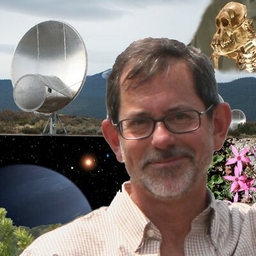
Robert Sanders
Science Writer, UC Berkeley at GMA Talkback
UC Berkeley science writer and fan of all things science, from particle physics and nano to bugs and the science of cooking.
Articles
-
1 month ago |
news.berkeley.edu | Robert Sanders
The University of California, Berkeley, a world leader in theoretical physics since J. Robert Oppenheimer planted the seed nearly 100 years ago, will share with four other institutions the largest gift ever to the field — $90 million.
-
1 month ago |
news.berkeley.edu | Robert Sanders
Many grooves and dimples on the surface of the brain are unique to humans, but they’re often dismissed as an uninteresting consequence of packing an unusually large brain into a too-small skull. But neuroscientists are finding that these folds are not mere artifacts, like the puffy folds you get when forcing a sleeping bag into a stuff sack. The depths of some of the smallest of these grooves seem to be linked to increased interconnectedness in the brain and better reasoning ability.
-
1 month ago |
universityofcalifornia.edu | Robert Sanders
The CRISPR treatment was administered safely, and the infant is now growing well and thriving, his doctors say. They hope that the treatment will make a liver transplant, which is usually required for survival, unnecessary for him. The boy inherited two mutated genes that prevented him from breaking down the proteins in his food, which leads to a build-up of ammonia that destroys the liver and can cause lifelong neurologic damage.
-
1 month ago |
news.berkeley.edu | Robert Sanders
In a medical first, doctors raced to create a bespoke CRISPR gene therapy for a boy born with a deadly genetic disease and delivered it to him a mere six and a half months after birth. The CRISPR treatment was administered safely, and the infant is now growing well and thriving, his doctors say. They hope that the treatment will make a liver transplant, which is usually required for survival, unnecessary for him.
-
1 month ago |
news.berkeley.edu | Robert Sanders
In a decision released today (May 12), the U. S. Court of Appeals for the Federal Circuit in Washington, D.C., ordered the U.S. Patent and Trademark Office’s Patent Trial and Appeal Board (PTAB) to reconsider its 2022 interference decision that scientists at the Broad Institute in Boston invented CRISPR-Cas9 gene editing in plant, animal and fungal cells.
Try JournoFinder For Free
Search and contact over 1M+ journalist profiles, browse 100M+ articles, and unlock powerful PR tools.
Start Your 7-Day Free Trial →X (formerly Twitter)
- Followers
- 2K
- Tweets
- 6K
- DMs Open
- No